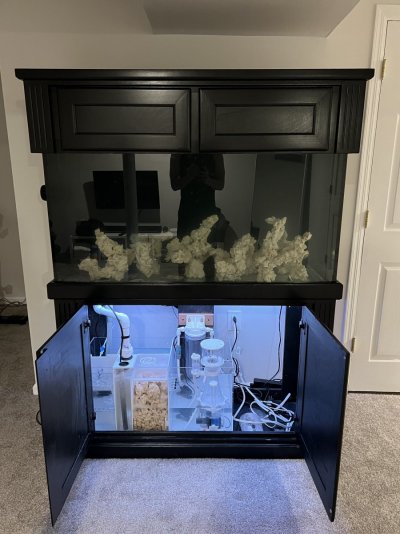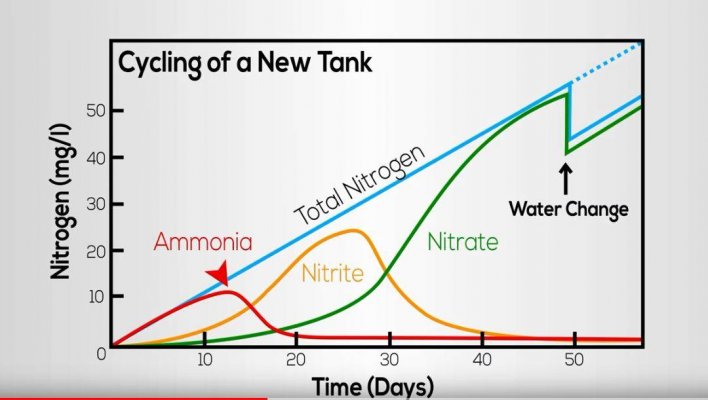Hello,
I Just began cycling my tank (shrimp method) and as we all know, the standard method for reducing nitrates is to perform a water change at the end of the cycle. Instead, I'm going to run bio pellets in a reactor through the cycle and see if it will help keep the nitrates low. I'm going to document it here for anyone interested in the results. I'm aware of the mixed opinions on this topic, and I've decided to test and document this method.
I plan on testing both Ammonia (Red Sea) and Nitrates (Salifert) on a daily basis, and I'll post progress updates.
I'll be adding 25% (84 ml) of the pellets to the reactor, once a week until I get to the recommended volume (336 ml). Per the directions, I will be running the skimmer.
I will not have the lights on during the cycle, and I plan on leaving them off for a few weeks as I add fish. Not sure if this will affect anything during the cycle, but it's worth noting. I'm primarily doing this to avoid algae for the time being.
For reference:
Tank total water volume: 89G (336L) (Measured by liter as I filled the tank and sump)
Bio Pellets: Two Little Fishies - NPX Bioplastics
Picture attached - This tank is starting from scratch. New, dry, uncured, Marco Rock, no sand bed. (Don't judge the wires, I haven't hooked up the apex yet.)
Let me know if there are any thoughts, questions, or recommendations on something I may have missed.

I Just began cycling my tank (shrimp method) and as we all know, the standard method for reducing nitrates is to perform a water change at the end of the cycle. Instead, I'm going to run bio pellets in a reactor through the cycle and see if it will help keep the nitrates low. I'm going to document it here for anyone interested in the results. I'm aware of the mixed opinions on this topic, and I've decided to test and document this method.
I plan on testing both Ammonia (Red Sea) and Nitrates (Salifert) on a daily basis, and I'll post progress updates.
I'll be adding 25% (84 ml) of the pellets to the reactor, once a week until I get to the recommended volume (336 ml). Per the directions, I will be running the skimmer.
I will not have the lights on during the cycle, and I plan on leaving them off for a few weeks as I add fish. Not sure if this will affect anything during the cycle, but it's worth noting. I'm primarily doing this to avoid algae for the time being.
For reference:
Tank total water volume: 89G (336L) (Measured by liter as I filled the tank and sump)
Bio Pellets: Two Little Fishies - NPX Bioplastics
Picture attached - This tank is starting from scratch. New, dry, uncured, Marco Rock, no sand bed. (Don't judge the wires, I haven't hooked up the apex yet.)
Let me know if there are any thoughts, questions, or recommendations on something I may have missed.




















